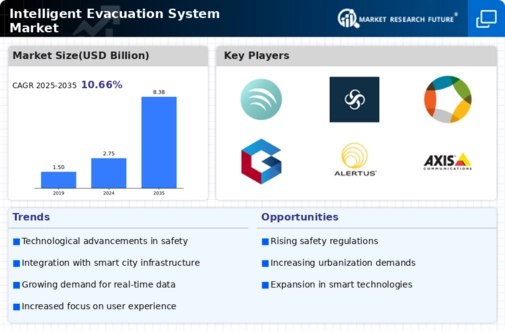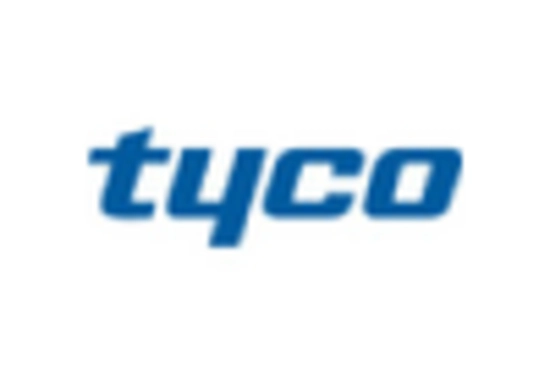Growing Urbanization
Urbanization is a significant driver for the Intelligent Evacuation System Market. As populations concentrate in urban areas, the complexity of managing large crowds during emergencies increases. High-rise buildings and densely populated spaces necessitate advanced evacuation solutions to ensure safety. The demand for intelligent systems that can guide individuals efficiently through complex environments is rising. According to recent estimates, urban areas are expected to house over 68% of the world's population by 2050, further emphasizing the need for effective evacuation strategies. This trend is likely to propel the market forward as cities invest in smarter infrastructure.
Technological Advancements
The Intelligent Evacuation System Market is experiencing a surge in demand due to rapid technological advancements. Innovations in artificial intelligence, machine learning, and real-time data analytics are enhancing the capabilities of evacuation systems. These technologies enable systems to process vast amounts of data, allowing for more efficient and effective evacuation strategies. For instance, the integration of IoT devices facilitates real-time monitoring of building occupancy and environmental conditions, which is crucial during emergencies. As a result, the market is projected to grow at a compound annual growth rate of approximately 12% over the next five years, reflecting the increasing reliance on technology in safety protocols.
Regulatory Compliance and Standards
The Intelligent Evacuation System Market is influenced by the increasing emphasis on regulatory compliance and safety standards. Governments and regulatory bodies are establishing stringent guidelines for emergency preparedness, which necessitates the adoption of advanced evacuation systems. Organizations are compelled to invest in intelligent solutions that not only meet these regulations but also enhance overall safety. The market is likely to expand as companies seek to align with these evolving standards, ensuring that their evacuation protocols are both effective and compliant. This regulatory landscape is expected to contribute to a market growth rate of approximately 8% annually, as businesses prioritize adherence to safety regulations.
Increased Awareness of Safety Protocols
The Intelligent Evacuation System Market is benefiting from heightened awareness regarding safety protocols among organizations and the public. Recent incidents have underscored the importance of having robust evacuation plans in place. Consequently, businesses and institutions are increasingly adopting intelligent evacuation systems to enhance their emergency preparedness. This shift is reflected in the growing number of safety regulations and standards being implemented across various sectors. As organizations prioritize employee and customer safety, the market is expected to see a significant uptick in demand for advanced evacuation solutions, potentially leading to a market expansion of over 15% in the coming years.
Integration with Smart City Initiatives
The Intelligent Evacuation System Market is closely linked to the development of smart city initiatives. As cities evolve to incorporate smart technologies, the integration of intelligent evacuation systems becomes essential. These systems can communicate with other smart infrastructure, such as traffic management and emergency services, to facilitate coordinated responses during crises. The push for smart city solutions is likely to drive investments in intelligent evacuation technologies, as municipalities seek to enhance public safety and operational efficiency. This trend may result in a market growth trajectory that aligns with the broader smart city development goals, potentially increasing the market size by 10% over the next few years.

















Leave a Comment